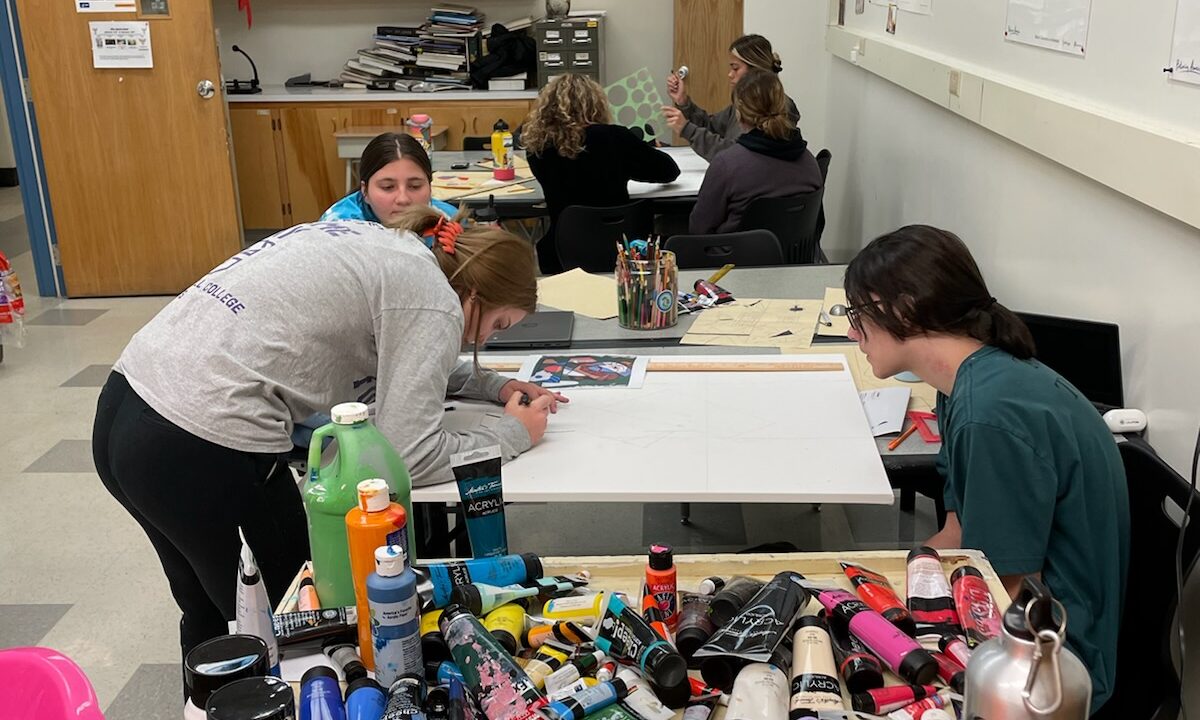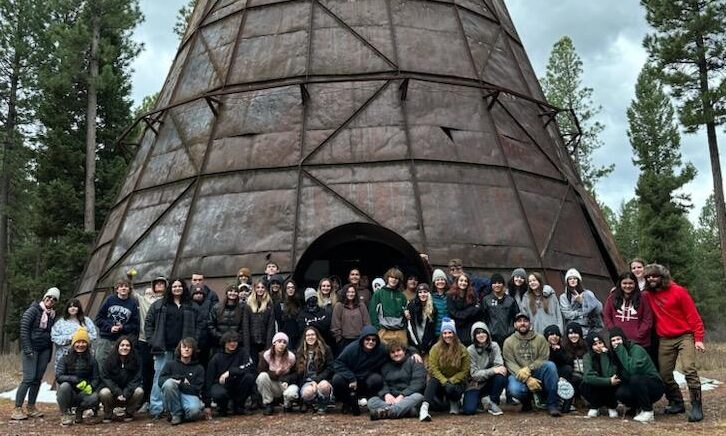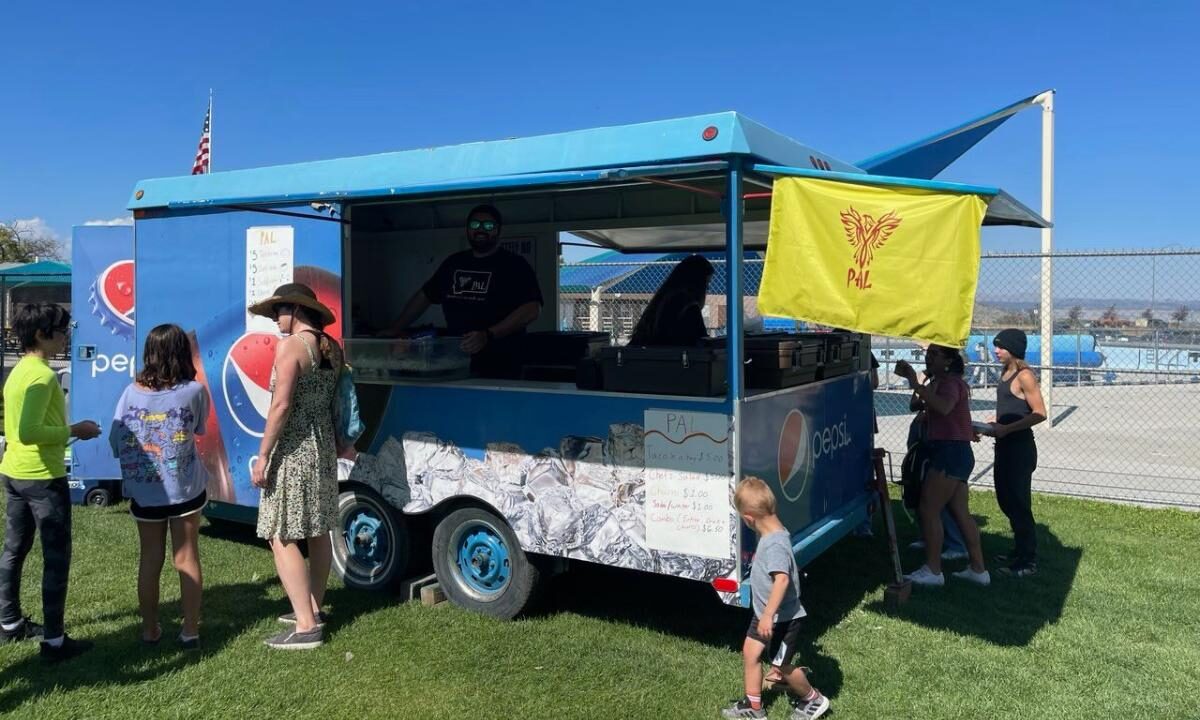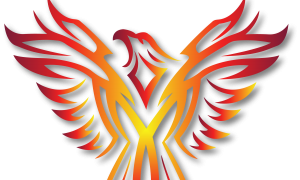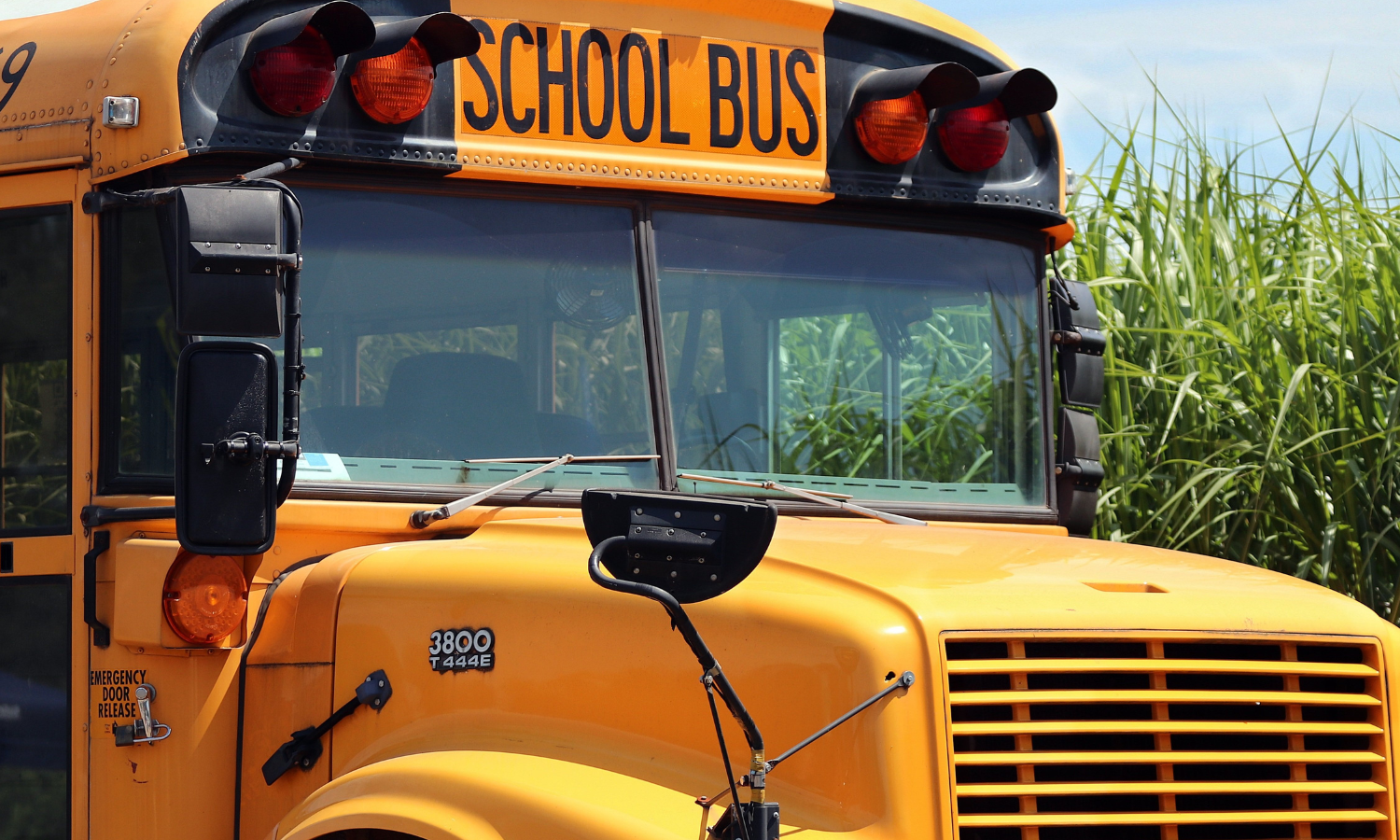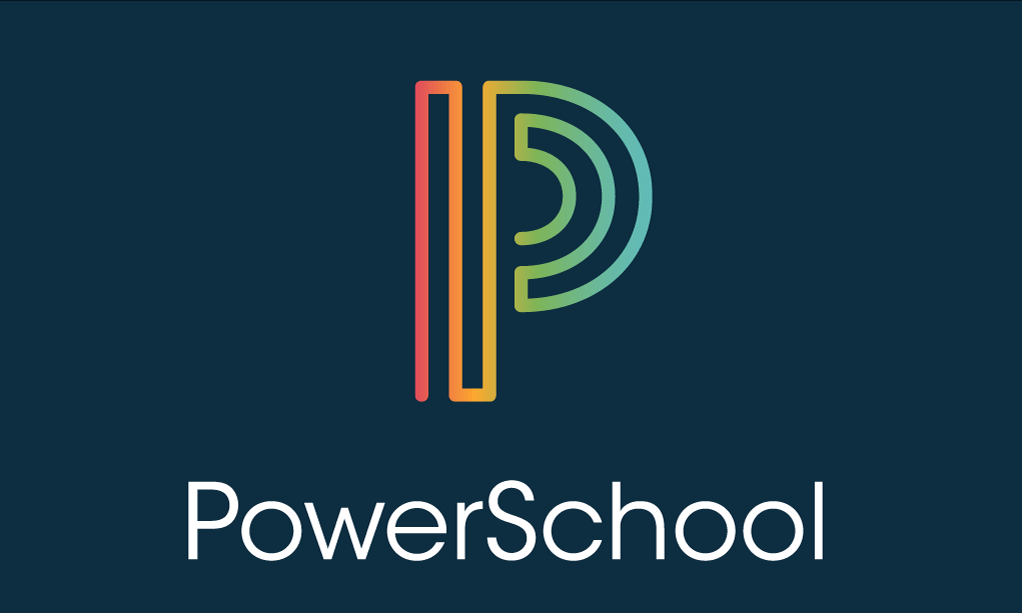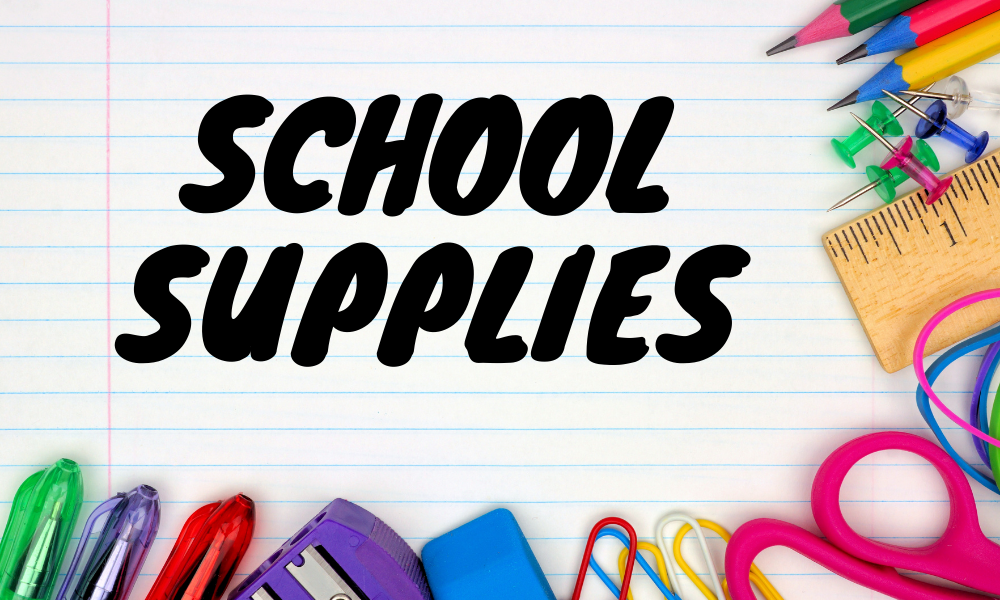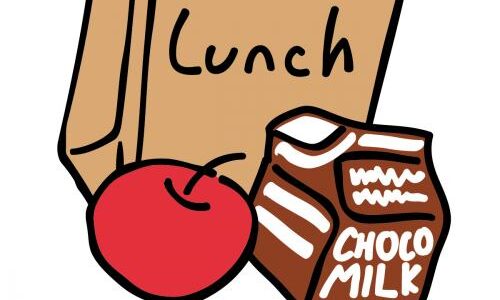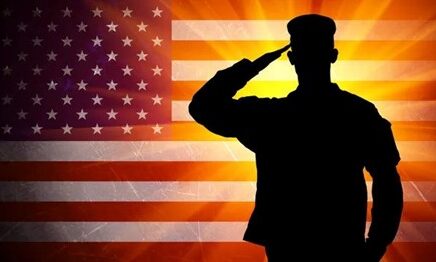Matthew Carey
Principal
406-324-1632
mcarey1@helenaschools.org
Dara Kittelmann
Administrative Secretary
406-324-1630
dkittelmann@helenaschools.org
Fax: 406-324-1631
04/19/24
Our orientation student are one block down in their PAL experience! Well done to that group of students and we hope for continued success. Many have found their place within the orientation group, among the other students and with our staff. It will be exciting to have them finish orientation and this school year with us. Soon enough they’ll be doing their orientation presentations to their families and staff members about their experience at PAL.
Speaking of experiences, the highlight this week was clearly our trip to UM-Western in Dillon. We even had the opportunity to see and hear from a current UMW freshman who graduated from PAL last year! Our juniors and seniors on the trip all took the campus tour seriously and asked great questions during the information luncheon and in small groups as we walked around campus. It was nice they got some free UMW drawstring bags too! I am hopeful that the trip inspired some of our students to consider college and further education after PAL should it fit their lifelong goals.
Lastly, a reminder that next week will start with a STAT day. You’ll get a second email from me if your student needs to report to STAT during the normal school time. Other students not on the STAT list need to be at school no later than 1120am.
Enjoy your weekend,
Matt Carey
406-324-1632
Block 11 Course Descriptions
Ryan:
Birth of Montana
Students will learn about the story of the greatest state in the Union, our very own Montana. This all-day class will be a mix of traditional and alternative lessons, consisting of work out of the Historical Society’s Montana History textbook, bits and pieces of Ken Burns’ “The West” and numerous field trips to historical sites around Western Montana, including First Peoples Buffalo Jump State Park, Fort Benton, the Fort Harrison Military Museum and MORE!
- SS.H.9-12.1 analyze how unique circumstances of time, place, and historical contexts shape individuals’ lives
- SS.H.9-12.2 analyze change and continuity in historical eras in US and world history
- SS.H.9-12.3 identify ways in which people and groups exercise agency in difficult historical, contemporary, and tribal contexts
- SS.H.9-12.4 analyze multiple, and complex causal factors that have shaped major events in US and world history, including American Indian history
- SS.H.9-12.5 explain events in relation to both their intended and unintended consequences, including governmental policies impacting American Indians
- SS.H.9-12.6 distinguish between long-term causes and triggering events in developing a historical argument
- SS.H.9-12.7 analyze how historical, cultural, social, political, ideological, and economic contexts shape people’s perspectives
- SS.H.9-12.8 analyze the ways in which the perspectives of those writing history shaped the history they produced
- SS.H.9-12.9 evaluate how historiography is influenced by perspective and available historical sources
OR Gov
This introductory course covers the basics of our great nation’s history and government. Primary founding documents will be analyzed and research will be done by students to determine what we can do as a people to improve the daily lives and existence of ALL Americans, regardless of what religion, political affiliation and economic status.
- SS.CG.9-12.1 analyze and evaluate the ideas and principles contained in the foundational documents of the United States, and explain how they establish a system of government that has powers, responsibilities, and limits
- SS.CG.9-12.2 analyze the impact of constitutions, laws, treaties, and international agreements on the maintenance of domestic and international relationships
- SS.CG.9-12.3 evaluate the impact of international agreements on contemporary world issues
- SS.CG.9-12.4 apply civic virtues and democratic principles when working with others
- SS.CG.9-12.5 evaluate how citizens and institutions address social and political problems at the local, state, tribal, national, and/or international levels
- SS.CG.9-12.6 evaluate the American governmental system compared to international governmental systems
Story of All of Us – Part II
This is a continuation of last block’s Story of All of Us – Part I. Students will pick up where the History Channel’s series ended last block, around the time of the rise of the Romans. This class is much more than just watching a series however; students will be asked a number of questions existential “life” questions, as we analyze what it means to be human on this planet of ours.
- SS.G.9-12.1 use geospatial reasoning to create maps to display and explain the spatial patterns of cultural and environmental characteristics
- SS.G.9-12.2 use geographic data to analyze variations in the spatial patterns of cultural and environmental characteristics at multiple scales
- SS.G.9-12.3 use maps, satellite images, photographs, and other representations to explain relationships between the locations of places and regions and their political, cultural, and economic dynamics
- SS.G.9-12.4 analyze relationships and interactions within and between human and physical systems to explain reciprocal influences that occur among them, including American Indians
- SS.G.9-12.5 evaluate the impact of human settlement activities on the environmental, political, and cultural characteristics of specific places and regions
- SS.G.9-12.6 analyze the role of geography on interactions and conflicts between various cultures in Montana, the United States, and the world
- SS.G.9-12.7 evaluate the influence of long-term climate variability on human migration and settlement patterns, resource use, and land uses at local-to-global scales
- SS.G.9-12.8 evaluate the consequences of human-driven and natural catastrophes on global trade, politics, and human migration
Michele:
Siddhartha with Bal-A-Vis-X (Eng)
This book captures Siddhartha’s quest (eventually the Budda) for the meaning of his life, enlightenment, Nirvana, inner peace, happiness, fulfillment, and bliss. The journey one must take in order to realize his or her destiny first begins when one leaves his or her comfort zone. We will discuss many philosophical topics and explore how allegory helps to better understand the 8-Fold path.
RL.9-10.5 Analyze how an author’s choices concerning how to structure specific parts of a text (e.g., the choice of where to begin or end a story, the choice to provide a comedic or tragic resolution) contribute to its overall structure and meaning as well as its aesthetic impact.
RL.9-10.3 Analyze the impact of the author’s choices regarding how to develop and relate elements of a story or drama or oral or written history (e.g., where a story is set, how the action is ordered, how the characters are introduced and developed).
SL.11-12.1 Initiate and participate effectively in a range of collaborative and culturally diverse discussions (one-on-one, in groups, and teacher-led) with diverse partners on grades 11– 12 topics, texts, and issues, building on others’ ideas and expressing their own clearly and persuasively.
Yoga (PE)
PE 1.1 a. Refine activity specific movement skills in one or more lifetime activities
PE 4.2 a. Advocate for responsible behavior of self and others in a variety of physical activities
Marie:
OR Careers – Exploration
Students will use information from their assessments class to research careers that match their interests, values, personality and learning styles. They will complete a review of six possible jobs, prepare a PowerPoint on a career of their choice and write a short essay on their career option.
Self-Assessment – Achievement Standard:
Apply knowledge gained through individual assessment to develop a comprehensive set of goals and an individual career plan.
• List positive characteristics about yourself; • Identify personal likes and dislikes; personal, physical and mental characteristics; and individual talents and interests; • Correlate personal, physical, and mental characteristics with the requirements of various career opportunities; • Complete a variety of standardized interest and career assessments
• Compare personal skills and aptitudes with various career options; • Assess and analyze personal talents and interests to future careers; • Determine attitudes needed for career success
NATIONAL STANDARDS FOR BUSINESS EDUCATION
Career Development
I. Strategic Career Planning
II. Career Exploration & Research
III. Career Readiness Expectations
Communication
II. Interpersonal Skills
V. Employment Communication
Economics & Personal Finance – Personal Finance
I. Personal Decision Making
Management
IV. Personal Management Skills
VI. Human Resource Management
Written Communication – Achievement Standard:
Prepare clear, complete, concise, correct, and courteous written messages for personal and professional uses.
• Communication competencies such as reading and comprehending written communications and information
• Use correct spelling, grammar, word, and number usage, punctuation and formatting
• Adapt language and style for specific audiences
• Proofread business documents to ensure that they are clear, correct, concise, complete, consistent, and courteous
• Identify factors affecting the readability of text
NATIONAL STANDARDS FOR BUSINESS EDUCATION
Communication
I. Foundations of Communication
III. Written Communication
V. Employment Communication
Information Technology
VI. Input Technologies
VIII. Digital Media
Management
IV. Personal Management Skills
Careers – Keyboarding through Google Docs
Students will be using Edutyping.com; Nitrotyping; and Google Docs – BE Publishing; to learning proper keyboarding skills, improve their confidence keyboarding, and keyboarding and editing in Google Docs.
Keyboarding or Input Technology
Achievement Standard:
Use various input technologies to enter and manipulate information appropriately including but not limited
keyboarding and mouse.
Objectives
• Develop touch keyboarding techniques; • Develop touch keyboarding skills at acceptable speed and
accuracy levels of 30 wpm with five (5) or fewer errors; • Proofread and edit copy for accuracy, content, correct
grammar, spelling, and punctuation; • Use pointing devices such as the mouse
NATIONAL STANDARDS FOR BUSINESS EDUCATION
Communication
I. Foundations of Communication
III. Written Communication
Information Technology
VI. Input Technologies
Personal Finance – Your Brain and Money
Resource Material: NGPF.org
Students will learn about the psychology of money and how our brain reacts to advertisements and social media urging to buy, buy, buy. We will focus on making good financial decisions and learning to manage our money.
NATIONAL STANDARDS FOR BUSINESS EDUCATION
Economics & Personal Finance – Personal Finance
I. Personal Decision Making
III. Managing Finances and Budgeting
II. Earning and Reporting
VI. Banking and Financial Institutions
VIII. Protecting Against Risk
Information Technology
III. Digital Citizenship
Achievement Standard:
Develop and evaluate a spending/savings plan.
• Use financial concepts and tools to make personal decisions regarding spending.
• Define financial planning
• Describe the benefits of financial planning
• Understand the components of a spending plan
• Review how financial goals can be met by using a spending plan
• Analyze the spending plan process
• Create a spending plan
NATIONAL STANDARDS FOR BUSINESS EDUCATION
Economics & Personal Finance – Personal Finance
II. Earning and Reporting
VI. Banking and Financial Institutions
VII. Using Credit
VIII. Protecting Against Risk
Information Technology
III. Digital Citizenship
Achievement Standard:
Evaluate services provided by financial deposit institutions.
Objective
• Identify the difference between debit cards, credit cards, and other banking services
Careers – Summer Jobs and Money
As students prepare for summer, many are looking for work. This class will focus on how to apply for a job, interviewing basics, and how to manage their money.
NATIONAL STANDARDS FOR BUSINESS EDUCATION
Career Development
II. Career Exploration & Research
III. Career Readiness Expectations
IV. School-to-Career Transition
Communication
II. Interpersonal Skills
V. Employment Communication
Management
IV. Personal Management Skills
VI. Human Resource Management
Career Readiness Expectations – Achievement Standard:
Relate the importance of career readiness skills to career development and application in the workplace.
Objectives–Work Ethic
• Adhere to policies, rules, and regulations of the organization; • Follow oral and written instructions; • Explain the importance of becoming involved in company activities; • Be prompt and establish a good attendance record; • Complete tasks within given time frames; • Respect and adhere to the chain of command when a conflict or problem occurs; • Discuss the necessity of assuming responsibility for quality of work performed; • Explain the value of seeking additional tasks and responsibilities; • Discuss the importance of displaying loyalty to the organization
Objectives–Workplace Relationships
• Demonstrate the importance of cooperation among people to accomplish a task; • Describe work-related activities in the home, community, and school; • Explain the importance of dress code, attendance, and other expectations in the workplace; • Explain the importance of respect for the feelings and beliefs of others; • Demonstrate appropriate social skills for the workplace; • Demonstrate problem-solving skills; • Describe how the workplace environment influences behavior
Nate:
Pre-algebra
The Pre-Algebra course is to serve as a bridge between computational mathematics and Algebra. This course will build a foundation of algebraic concepts using technology, manipulatives, problem solving, and cooperative learning. We will focus on building logical thinking skills, estimation, and connections between math and everyday applications. This course is designed to prepare students for Algebra I.
Montana State Standards: 8.MP.1, 8.MP.2, 8.MP.4, 8.MP.5, 8.MP.6, 8.MP.7, 8.MP.8
Algebra 1A
In the Algebra 1A course students will be introduced to basic algebraic skills and provided the foundation for all subsequent math courses. Topics include, but are not limited to, properties of real numbers, relations, linear, quadratic, and exponential functions, graphing equations and inequalities. This course lays the foundation for mathematical literacy that will help students be successful in every subsequent course in mathematics.
Montana State Standards: HS.MP.1, HS.MP.2, HS.MP.3 HS.MP.4, HS.MP.5, HS.MP.6, HS.MP.7, HS.MP.8
Algebra 1B
Algebra 1B will represent the second half of algebra that introduces students to variables, algebraic expressions, equations, inequalities, functions, and all their multiple representations. In this class, students will develop the ability to explore and solve real-world application problems, demonstrate the appropriate use of graphing calculators, and communicate mathematical ideas clearly.
Montana State Standards: HS.MP.1, HS.MP.2, HS.MP.3 HS.MP.4, HS.MP.5, HS.MP.6, HS.MP.7, HS.MP.8
3D Printing
Students in this course will be learning how to create and print 3D objects on the MakerBot 3D printer. We will be focusing on business mathematics and measurement. The class will have to calculate material costs and markup to determine a sale price for objects printed. Students will also be learning scale and measurement skills to create objects to print on 3D modeling software.
Montana Standards: HS.MP.4, HS.MP.1, HS.MP.6
Isaiah:
OR Greek Mythology – SS.H.9-12.1: analyze how unique circumstances of time, place, and historical contexts shape individuals’ lives
SS.H.9-12.2 analyze change and continuity in historical eras in US and world history
Orientation will be covering Greek culture specifically their mythology. They will be studying the myths, gods, and goddesses that were revered in the culture of Ancient Greece.
Emily T:
Printmaking: students will experience several different types of printmaking: monoprints with Gelli plates, screen printing, and collagraph. Come experience the magic of creating multiple pieces of art with one plate. Once you try it, you will be hooked.
VA1. develop plans for creating art and design works using various materials and methods from traditional and contemporary practices
VA3. complete artworks or designs incorporating relevant criteria as well as personal artistic vision
VA5. apply appropriate methods or processes to display artwork in a specific place
VA7. evaluate the effectiveness of an artwork as perceived by a variety of audiences
VA8. defend an interpretation of an artwork or collections of artworks
VA10. incorporate knowledge of personal, social, cultural, and historical life to create art
Mortarboard Decoration: calling all Seniors! If you are interested in decorating your mortarboard (cap) for graduation, this is the class for you. Self-expression, appreciation, and joy are jumping off points for your design. No worries if you can’t make it this block, I will be offering this class again Block 12.
VA1. develop plans for creating art and design works using various materials and methods from traditional and contemporary practices
VA3. complete artworks or designs incorporating relevant criteria as well as personal artistic vision
VA5. apply appropriate methods or processes to display artwork in a specific place
VA7. evaluate the effectiveness of an artwork as perceived by a variety of audiences
VA8. defend an interpretation of an artwork or collections of artworks
VA10. incorporate knowledge of personal, social, cultural, and historical life to create art
OR Art: students will continue with self-discovery through artmaking. This block will focus on occupied and unoccupied space as well as color connections and symbolism. Self-assessment and group critique and discussion are vital components of this class.
Each student will:
VA1. develop plans for creating art and design works using various materials and methods from traditional and contemporary practices
VA3. complete artworks or designs incorporating relevant criteria as well as personal artistic vision
VA5. apply appropriate methods or processes to display artwork in a specific place
VA7. evaluate the effectiveness of an artwork as perceived by a variety of audiences
VA8. defend an interpretation of an artwork or collections of artworks
VA10. incorporate knowledge of personal, social, cultural, and historical life to create artworks
Brooke:
The Body Keeps Score:
According to van der Kolk, there are specific avenues of healing and self-care. As a class, we will delve into some of the avenues, including, mindfulness practices, physical exercise, breathwork, and creative expression, while we read excerpts from The Body Keeps Score.
HE 1.2 a. Analyze the interrelationships of physical, mental, emotional, family, and social health on personal health, including those of American Indian cultures and practices.
Outdoor PE Class:
This is a class of variety! We will be doing a HIIT, speed walking, calisthenics, band workouts, and more (all OUTSIDE!!!)
PE 4.2 a. Advocate for responsible behavior of self and others in a variety of physical activities
PE 4.7 a. Apply best practices for participating safely in physical activity, exercise and dance
Emily P:
Human Reproduction course description:
Students will investigate the human reproductive system. The focus of this class is to understand the human body is a complex system and the coordinated functions of its many structures support life processes and maintain homeostasis. We will specifically cover:
· Anatomy
· STDs
· Contraception
Health Enhancement Standards
3. Compare and contrast various ways to prevent communicable diseases;
9. Analyze human body systems, their function and their interrelationship with one another;
10. Explain the natural body changes of reproductive health;
11. Explain fertilization, conception and how the baby’s sex and inherited traits are determined;
34. Evaluate the effectiveness of safety and health-related decisions;
39. Discuss ways to advocate for a variety of healthy practices and behaviors that will maintain or improve the health of self and others;
40. Analyze the role of individual responsibility for enhancing health;
41. Discuss ways to advocate for a variety of behaviors to avoid or reduce health risks to self and others;
Science Standards
LS1.Aplan and conduct an investigation to provide evidence that feedback mechanisms maintain homeostasis
News and View Science Style:
Students will investigate global science issues using the ‘GALE Opposing Viewpoints in Context’ resource found in the HHS Library online resources. Each student will investigate different topic/issue and write a report including a background and both sides of the issue. Once the students are “experts” on their topic they will teach/inform the rest of the class about the issue. Some of the topics include: offshore drilling, fracking, local food movement, recycling, space exploration, mass extinctions, arctic national wildlife drilling, Western US drought, renewable energy, animal experimentation, and factory farming. The class will also look at additional online science articles to have daily discussions about science in society and current science and technology issues that impact our heath, environment, quality of life, and economy.
Science Standards:
Construct an explanation based on evidence for how the availability of natural resources, occurrence of natural hazards, and changes in climate have influenced human activity. HS-ESS3-1.
Construct explanations and design solutions cause and effect evaluate competing design solutions for developing, managing, and utilizing energy and mineral resources based on cost-benefit ratios. HS-ESS3-2.
Analyze and interpret data stability and change create a computational simulation to illustrate the relationships among management of natural resources, the sustainability of human populations, biodiversity, and investigate and explain how some American Indian tribes use scientific knowledge and practices in managing natural resources. HS-ESS3-3
Using mathematics & computational thinking stability and change evaluate or refine a technological solution that reduces impacts of human activities on natural systems. HS-ESS3-4.
Plants
This is a botany class which takes place for the last quarter of the school year (blocks 10, 11, & 12). The students participate in planting a large number (hundreds) of vegetables from seed before transferring them to larger containers, and ultimately ending up gardens throughout Helena. This is the 10th year we have done this project. Thanks to a Helena Education Foundation grant, we have a greenhouse for this exciting and productive project. We have multiple community partners to make productive use of our endeavors. Local experts, including a master gardener, come into the classroom to inform and inspire the PAL students. The students will transfer plants to the Helena Food Share Garden plots to provide the Food Share with free fresh produce. We work closely with volunteers at both Helena Food share and the community gardens to get our plants in the ground at the beginning of June. The rest of the plants will go home with students to grow their own gardens throughout the summer. Students who have never grown anything before are able to grow, eat and share vegetables with others. Students learn about nutrition and the value of growing food, promoting important lifelong skills.
Science Content standards
HS-LS2-7 design, evaluate, and refine a solution for reducing the direct and indirect impacts of human activities on the environment and biodiversity and analyze scientific concepts used by American Indians to maintain healthy relationships with environmental resources.
Health Enhancement content standards
39. Discuss ways to advocate for a variety of healthy practices and behaviors that will maintain or improve the health of self and others;
40. Analyze the role of individual responsibility for enhancing health;
Science Fair
This block we will be teaming up with the Central Elementary school Montessori 4th/5th grade class to carry out a science fair. The PAL students will
- Create science fair experiments and presentations
- Provide feedback and assistance to the Central Elementary school Montessori 4th/5th graders on their projects
- Be judges/assessors at the Central School Science Fair on May 7th
Science Standards
RST.9-10.6 -10.9
Analyze the author’s purpose in providing an explanation, describing a procedure, or discussing an experiment in a text, defining the question the author seeks to address.
Translate quantitative or technical information expressed in words in a text into visual form (e.g., a table or chart) and translate information expressed visually or mathematically (e.g., in an equation) into words.
Assess the extent to which the reasoning and evidence in a text support the author’s claim or a recommendation for solving a scientific or technical problem.
Compare and contrast findings presented in a text to those from other sources (including their own experiments, and knowledge derived from American Indian cultures), noting when the findings support or contradict previous explanations or accounts.
PE – Ultimate frisbee! Students need to be ready move and spend some time outside! We might make it over to the frisbee golf course in the south hills for one class period too!
- Identify the different energy systems used in physical activities
- Accept differences between personal characteristics and the idealized body images and elite performance levels portrayed in various media
- Advocate for responsible behavior of self and others in a variety of physical activities
- Analyze the benefits of a variety of feedback techniques
- Examine moral and ethical conduct in specific competitive situations
- Assume a leadership role in a physical activity setting (i.e., coach, referee, group leader); 22. Advocate for acceptance of other’s ideas, cultural diversity and body types by engaging in cooperative and collaborative movement projects
- Apply best practices for participating safely in physical activity, exercise and dance
- Analyze the health benefits of a self-selected physical activity
- Choose an appropriate level of challenge to experience success while participating in a self-selected physical activity
- Evaluate social interactions and supports in a variety of physical activities.
Sam:
Guitar and its Players
This class will encompass a brief, but hopefully lasting, introduction to both the history of the guitar and its players as well as physically learning to play the guitar.
Outcomes/Objectives: To have a historical and cultural perspective on the guitar as an evolved musical instrument. Appreciate and celebrate major influencers both musically and technically. Have some firsthand exposure through the practice of playing the guitar to connect with the instrument aesthetically and tangibly.
Standards: Initiate and participate effectively in a range of collaborative discussions (one-on-one, in groups, and teacher-led) building on others’ ideas and expressing their own clearly and persuasively. Come to discussions prepared, having read and researched material under study; explicitly draw on that preparation by referring to evidence from texts and other research on the topic or issue to stimulate a thoughtful, well-reasoned exchange of ideas.
-Make strategic use of media (e.g., textual, graphical, audio, visual, and interactive elements) in presentations to enhance understanding of findings, reasoning, and evidence and to add interest.
Reading on Your Own (R.O.O.)
In this class students will establish a book of their choice and read it in class. They will share a guided “book talk” with the class at the end of the block to evaluate their chosen book and generally critique the reading experience.
Outcomes/Objectives:
Engage with a chosen book and hopefully ignite a love of reading as a form of information and entertainment.
Standards:
-Determine the central ideas or information of a primary or secondary source; provide an accurate summary of how key events or ideas develop over the course of the text.
-Compare and contrast findings presented in a text to those from other sources (including their own experiments, and knowledge derived culture), noting when the findings support or contradict previous explanations or accounts.
Film Study (III)
As a class we will watch, study, and analyze chosen works of cinema. We will learn to act the film critic in both written and oral ways.
Outcomes/Objectives: Students understand that a film is a work of art. Students describe, interpret, and analyze a film’s visual design. They respond to and make informed judgments about film, deriving personal meaning from the work. They express their viewpoints through oral and/or written presentations.
Standards:
-Determine the central ideas or information of a primary or secondary source; provide an accurate summary of how key events or ideas develop over the course of the text
-Compare and contrast findings presented in a text to those from other sources (including their own experiments, and knowledge derived culture), noting when the findings support or contradict previous explanations or accounts.
OR English (Life Story)
Students will write a guided autobiography of their lives thus far and address projections of goals, dreams, and aspirations to come.
Outcomes/Objectives: To write analytically about one’s life and the lessons learned regarding the processing of both negative and positive influences. Also, evaluate life plans in consideration of personal and career decisions to come.
Standards: Use precise words and phrases, telling details, and sensory language to convey a vivid picture of the experiences, events, setting, and/or characters.
Ultimate Frisbee
As a class we will study and play the game of Ultimate Frisbee.
Outcomes/Objectives: Engage, or further engagement, with the team sport of Ultimate as a team-building, physically active, and hopefully fun sport.
Standards: Through learning experiences in physical education, the student develops an understanding of how movement is personally beneficial and subsequently chooses to participate in physical activities that are personally meaningful (e.g., activities that offer social interaction, cultural connection, exploration, choice, self-expression, appropriate levels of challenge, and added health benefits). The student develops personal skills including goal setting, identifying strengths, and reflection to enhance their physical literacy journey.
Attendee panel closed
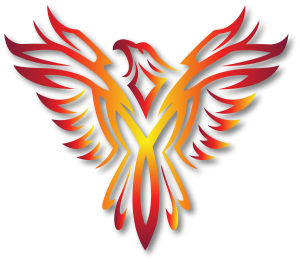 This is our school: a place of knowledge, tolerance, respect and understanding. We welcome the people who want to be here, and we invite them to share in our unique learning community.
This is our school: a place of knowledge, tolerance, respect and understanding. We welcome the people who want to be here, and we invite them to share in our unique learning community.